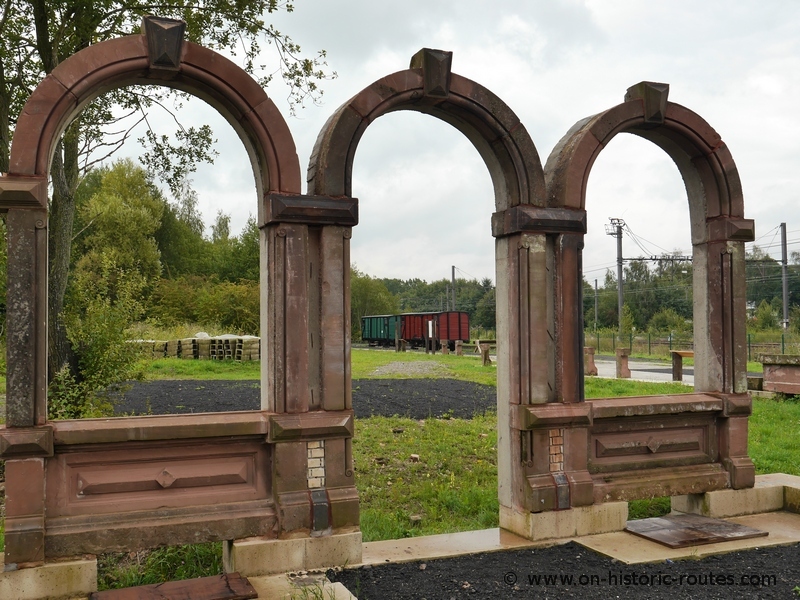When you drive through Welkenraedt/Herbesthal today it looks like a typical Belgium village.
You might notice some German signs though and if you look closer, you will find that streets on one side of the main street have German names and there are French names on the other side.
The main street itself is called Neutralstrasse (neutral road) and today is the border between the French and the German speaking part of Belgium.
In 1914 it was the border between Belgium and Germany. It was an open border with a lot of interaction going on. Trade and people working across the border was a normal sight.
There also was interaction on a larger scale. Near the bridge across the railway tracks in the center of Herbesthal a small paved road leads down to the tracks. At the end of that road, where today are only ruins was the railway station.

Herbesthal railway station was the first international border station in Europe in the 1840s. It was on the main line between both countries and quickly grew in importance. A post office was added to handle the international mail and a representative station building was added with facilities to cater royal passengers.
It was a hub for international travel, much like airports are today. Luxury trains ran from Paris to Moscow and from the channel ports to Vienna. They all stopped in Herbesthal for border crossing.
The war put an end to this era of international travel in Herbesthal. A few days after the invasion, the monstrous Big Bertha guns were unloaded here and went on their way to shell Liége and the station helped to supply the western front with men and material for the coming four years.
After the war Herbesthal lost its importance as a border station as the border was further east and Herbesthal became part of Belgium. The station was finally closed in the 1960 and demolished in 1983.
As part of the centenary, there is an interesting exhibition showing the history of the railway station. There are photos and information panels telling the history of the area and two restored railway goods cars are on display, where the tracks were in 1914.
The exhibition with historic pictures really helps to appreciate the location and understand how this rather run-down place near some railway tracks once was a hub for international travel.
This post is part of the series “The way to the Western Front”. Explore the full content here..
Share This: